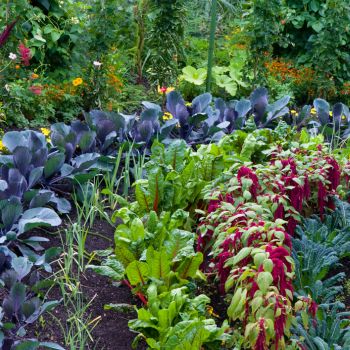Late spring is a beautiful time to be in the garden, with warm temperatures and spring rainfall resulting in lush new growth, buds and flowers. Longer days mean more time to work in and enjoy your patch, and there's always plenty to do. Flower and vegetable gardeners can begin to enjoy the fruits of early spring seed sowing, transplanting herbs and veg into their final locations so they're well established before the heat of summer hits. There are few things more rewarding than noticing the first buds or flowers on a plant you've grown from seed!
Seeds to Sow in November
If you are in a cool or moderate climate and you haven't planted tomatoes yet, there is still plenty of growing season left, particularly if you choose a small cherry type. The warmer weather also means pumpkin, squash, zucchini and various other warmer weather plants can now be sown directly outdoors.
Gardeners in moderate and warm climates can plant heat-loving beans and watermelon now. See our guide to growing watermelon from seed for tips on getting the most from this summer fruit. In tropical regions, sow these plus okra and rosella. Both of these crops need warm soil temperatures to germinate.
Wherever you live, fill any gaps in garden beds or containers with quick-growing leafy greens such as cut and come again lettuce or leaf amaranth. Radishes and dill are also great for popping into bare patches and are harvestable within a few weeks.
Other seeds that can be sown in October can be found by clicking the links below:
▩ Cold Climate: Tasmania, Melbourne, Mt Gambier, Canberra, etc.
▩ Moderate Climate: Sydney, Perth, Adelaide, etc.
▩ Warm Climate: Brisbane, Bundaberg, Carnarvon, etc.
▩ Tropical Climate: Broome, Darwin, Cairns, Townsville, etc.
▩ Not sure which climate? Click here.
Garden Tips for November
Seedlings: Now's the time to transplant seedlings of spring and summer vegetables and herbs into their final position in the garden. Plant them at the recommended spacing, water in well and be diligent with watering and snail and slug control until they're well established. Thin seedlings that were direct sown to the recommended spacing to allow them enough room to properly develop their root systems, which will lead to better growth and more flowers and fruit. Once seedlings are established, apply a slow release fertiliser or use a liquid feed.
Prepare for warm weather: As the temperature rises, check watering systems, water tanks, taps and hoses to make sure they're functioning properly. Water deeply to encourage plants to develop deep root systems, which will make them more resilient in hot weather. Water in the morning or late afternoon to reduce the amount of water lost to evaporation. Water pot plants thoroughly each time you water, and move them so they're protected from the hot afternoon sun.
Mulch: Mulch suppresses weeds, regulates soil temperature, helps to reduce evaporation and can add organic matter to the soil. Weed the area to be mulched, water thoroughly and add compost or other fertiliser before applying mulch in a 5 to 10cm thick layer. For vegetable gardens, organic mulches that are high in nitrogen, such as lucerne or pea straw, will add nutrients to the soil as they break down. For other areas of your garden, a chunkier organic mulch such as wood chips or pine bark is often a more economical and aesthetically pleasing choice. Spread blood and bone at a rate of 100g per square metre before applying these mulches to compensate for the nitrogen the wood chips will use as they're decomposing.
Plants for pollinators: Australian Pollinator Week is from 13 to 21 November. Pollinators include bees and butterflies, flies, wasps, beetles and birds, and each will be attracted to specific types and colours of flower. To attract a wide range of pollinators to your garden, plant a variety of plants and flowers, including some natives, that flower throughout the year. Don't forget that pollinators also need water in hot weather, so include sources of shallow water and top them up on hot days.
Protect your harvest: Net stone fruit trees to protect the ripening fruit from birds, bats and possums. To avoid accidental injury to flying foxes, birds and other wild animals, make sure your netting is white and has a mesh size no larger than 5mm at full stretch so you can 'harvest without harm'. Also regularly monitor fruit for Queensland fruit fly and use traps, insect exclusion bags or sleeves if needed. Fruit fly will not only infest fruit trees; also be on the lookout for affected tomatoes, capsicum and berries.
%20(9).jpg)





